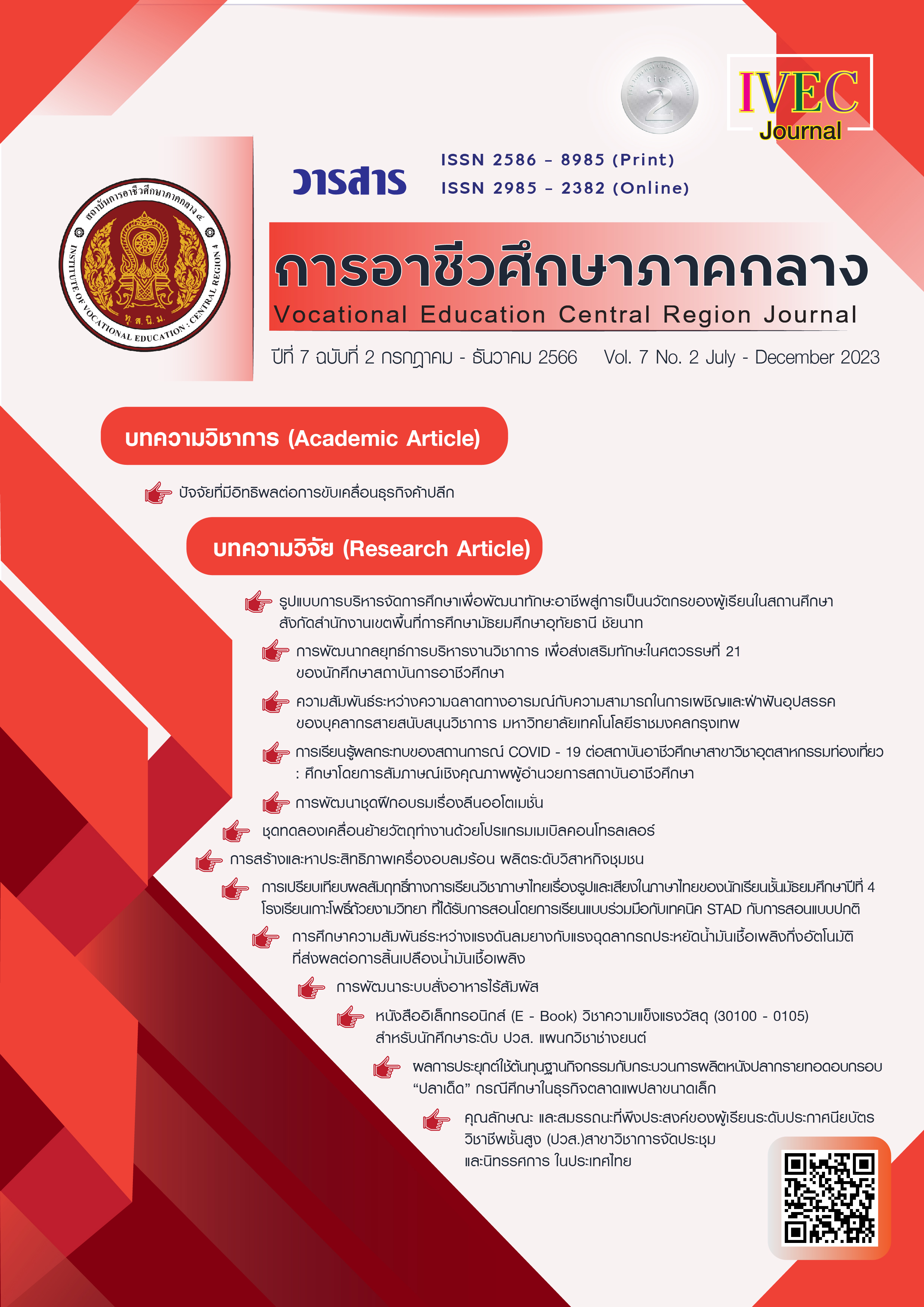Development of a Contactless System for Placing Food Orders
Main Article Content
Abstract
The development of a contactless ordering system for food was motivated by the COVID - 19 epidemic, which raised public health awareness and reduced exposure to viruses. Make it simplefor clients to place orders and pay with their smartphones. The restaurant can also collect information on customer preferences and purchasing patterns, which helps improve services.
A contactless system for placing food orders is intended to: 1) develop a contactless food ordering system, 2) Test out the functionality of our contactless system for placing food orders and 3) find satisfaction in using contactless system for placing food orders. The sample group was composed of Suphanburi Vocational College students 320 people in the academic year 2022 out of a total population of 1 ,907 people. Information from the registration of Suphan Buri Vocational College as of July 6, 2022, was obtained without using probability theory. Non - Probability Sampling is the term used to describe accidental or random sampling. The data were analysed using the percentage, mean, and standard deviation. The study's conclusions support the viability of A contactless system for placing food orders. Total effectiveness is at its highest point. By In the higher echelons, using A contactless system for placing food orders has generally proven successful.
Article Details

This work is licensed under a Creative Commons Attribution-NonCommercial-NoDerivatives 4.0 International License.
|
บทความ ข้อมูล เนื้อหา รูปภาพ ฯลฯ ที่ได้รับการตีพิมพ์ในวารสาร การอาชีวศึกษาภาคกลาง ถือเป็นลิขสิทธิ์ของวารสารการอาชีวศึกษาภาคกลางหากบุคคลหรือหน่วยงานใดต้องการนำทั้งหมดหรือส่วนใดส่วนหนึ่ง ไปเผยแพร่ต่อหรือเพื่อกระทำการใด ๆ กองบรรณาธิการไม่สงวนสิทธิ์ ในการคัดลอกบทความเพื่อการศึกษาแต่ให้อ้างอิงแหล่งที่มาให้ครบถ้วน สมบูรณ์ สงวนสิทธิ์ โดย สถาบันการอาชีวศึกษาภาคกลาง 4 ที่ตั้ง 90 ถนนเทศา ตำบลพระปฐมเจดีย์ อำเภอเมือง จังหวัดนครปฐม โทรศัพท์ 034 242 856 , โทรสาร 034 242 858 ISSN : 3056-9176 (print) ISSN : 2985-2382 (online) |
References
งานโรคติดต่ออุบัติใหม่ กลุ่มพัฒนาวิชาการโรคติดต่อ. (2564). สถานการณ์โรคติดเชื้อไวรัสโคโรนา 2019 (COVID-19) มาตรการสาธารณสุข และปัญหาอุปสรรคการป้องกันควบคุมโรคในผู้เดินทาง. ค้นเมื่อ เมษายน 18, 2566, จาก https://ddc.moph.go.th/uploads/files/2017420210820025238.pdf
จงจิต ปินศิริ, เจษฎากร โนอินทร์, และ นิรัชรา ลิลละฮ์กุล. (2566). การพัฒนารูปแบบมาตรการปลอดภัยสำหรับองค์กรเพื่อป้องกันการแพร่ระบาดของ โรคโควิด - 19 : กรณีศึกษาบริเวณถนนคนเดินกาดข่วงเมืองน่าน. วารสารวิชาการสาธารณสุข, 32, (2), หน้า 322-332.
วราภรณ์ ไทยมา และ วรพล อิทธิคเณศร. (2563). การเปลี่ยนแปลงทางธุรกิจสู่เทคโนโลยีการสื่อสารในระบบ 5G. Vocational Education Central Region Journal, 4 (1), หน้า 11 - 16.
Blackwell, D. (1973, March). Discreteness of Ferguson Selections. The Annals of Statistics, 1, (2), pp.356-285.


